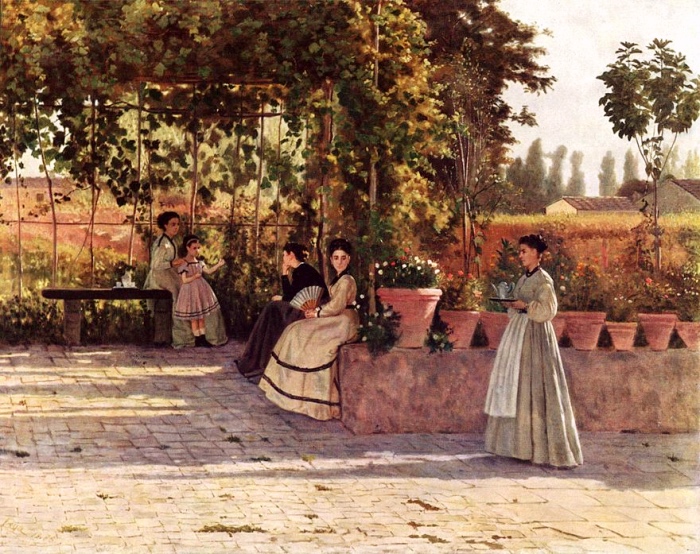The Macchiaioli

Silvestro Lega, La pergola (1868).
THE MACCHIAIOLI
Macchiaioli. Not a year goes by without an exhibition dedicated to the Macchiaioli or to an artist who was attached somehow to the most important artistic movement in Italy in the 19th century.
I think it’s time for me to give a definition of “Macchiaioli”, and I will be waiting for your comments in order to know if you like their paintings.

Macchiaioli – Telemaco Signorini, L’alzaia (1864).
The term Macchiaioli indicates a group of Italian painters active in Tuscany in the 1850s and in the 1860s, who rejected the historical and mythological subjects typical of Neoclassicism and Romanticism, in order to do paintings which portrayed scenes of everyday life.
This group of artists met at the Caffè Michelangiolo in Florence, and introduced themselves to the public on the occasion of the Esposizione Nazionale (National Exposition) held in 1861, during which the paintings by the Macchiaioli were exhibited.
The main exponents of the movement were Telemaco Signorini, Giovanni Fattori and Silvestro Lega, who were named scornfully Macchiaioli, because of their painting technique consisting of spots and small brushstrokes, without using a preparatory drawing.
In their paintings the outlines of the figures are blurred in the attempt to depict the reality as it appears when you cast a swift glance over it.
In the years in which this artistic movement sprang out, the political and civil commitment was almost compulsory, and several Macchiaioli enlisted during the Wars of Italian Independence, or they painted the most important events.
“Campo italiano dopo la battaglia di Magenta” (“After the battle of Magenta”) by Giovanni Fattori, that I showed on the occasion of the exhibition arranged in Padua, is the first Italian painting representing an event of contemporary history.
The Macchiaioli movement is considered to be the artistic expression of those cultural movements of the 19th century which strove to represent the world in a Realist way: Naturalism and Verismo.
These movements were misunderstood at that time, and were revaluated in the 20th century, especially because of their innovative use of colour, and nowadays a lot of people consider them as the forerunners of the Impressionist painting.

Giovanni Fattori, The white wall (1872)
Follow me on:
About me
In this blog, I don't explain the history of art — I tell the stories that art itself tells.


